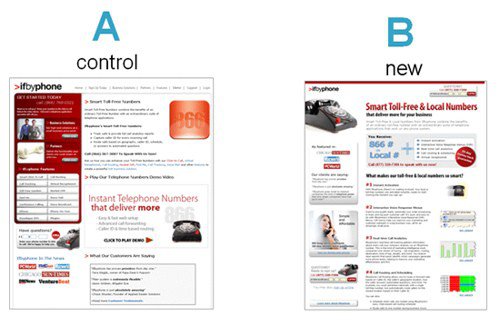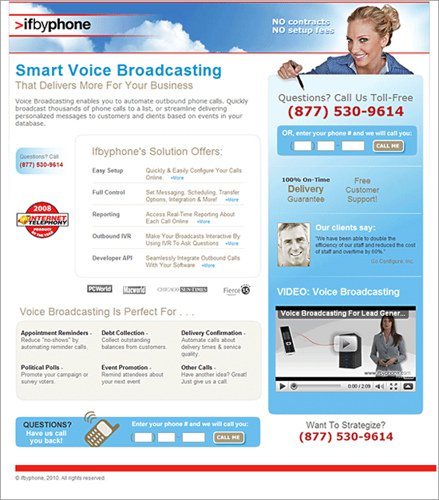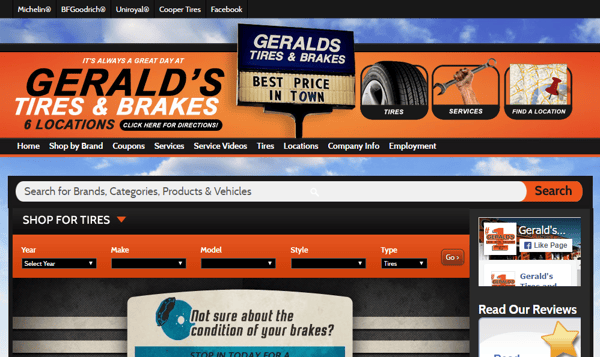Not sure how to track the phone calls your hotel receives? Would you like to learn how to use call tracking to grow your hotel bookings?
Here’s the great benefit of online marketing for hoteliers: it’s much easier to implement and track than traditional marketing, and it comes with advanced analytics that let you understand what your audience is doing. This information can then be used to both target and expand your current marketing methods, generating more revenue.
Call tracking does the same thing, but for your phones instead of your ads.
Today, we’re going to give you a quick primer on call tracking, and then show you how to use call tracking to grow your hotel bookings. Consider this your one-stop shop for learning why call tracking is good for you, and how to make it work for you.
Let’s get started.
Is Call Tracking Good For My Hotel?
The answer to that is almost certainly yes. Here’s why.
With the huge number of online marketing analytics and tools, phone marketing seemed like a burden – and an old-fashioned one, to some. Hotels had a dilemma. On the one hand, phone marketing generates high quality leads. Phone calls are 10 to 15 times more likely to convert than web leads. In the hotel industry specifically, as recently as 2011 up to 25% of bookings were still placed over the phone, despite the existence of mature ecommerce platforms.
This is because telephone assistance is especially necessary for hotels: booking rooms can costs hundreds or even thousands of euro. For some guests, a website and a booking engine won’t always be enough to make them feel secure. Several people will call with questions before they’re ready to make a purchase.
Here’s the downside. Until recently, you couldn’t track which of your approaches over the phone were working or not working. You had no reliable, data-based way to see which of your telemarketing methods were getting you the best results.
This all changed with the introduction of call tracking. By implementing call tracking, business could see which ads got them the most calls, how their sales team and customer service executives were performing on the phone, and many other things. It helped them modify their phone marketing methods and improve ROI.
Call tracking can help your hotel find out which queries come up most often, how customers prefer to be dealt with – based on which calls result in booking – and find out which of their other marketing approaches, online or off, are leading to calls.
What Is Call Tracking?
You like the sound of getting more data from your customer phone calls – but what exactly is call tracking? Call tracking is a relatively new kind of software that lets you see a) where your phone calls are coming from, and b) what’s working and what isn’t when your staff speaks to customers.
To see where phone calls are coming from, call tracking lets you create and track a different phone number for each campaign you run. This means that whether your ads are on Google, on Facebook or in your local paper, you’ll be able to tell who’s coming from where – even if they don’t click on the ad.
How does it work? When you have call tracking, you can instantly create local or toll-free numbers which will be routed through the software before reaching your phone. The software will automatically record which numbers are getting the most calls, the location of calls, and how long phone calls are lasting.
If you want to get advanced, you can use call tracking in conjunction with a CRM. Doing it this way lets you see exactly how much revenue you’re getting from your marketing channels, and lets you align your sales and marketing team with your customer service team.
Call tracking is hugely important when it comes to measuring ROI for your marketing channels. If you get a surge of calls after putting out a new spring offer, call tracking lets you find out which ads are working for you. We’ll show exactly how to do that below.
See Which Campaigns are Leading to Calls:
If you want to get the most out of paid advertisements, you need to place them in strong channels, where your target audience will see them. This should include both online and offline places like digital ads (Facebook, Google, Twitter, website ads, etc.), newspaper ads, hoardings, etc. You will only know which method works best if you experiment.
When you create your ads, it’s important to give your audience various points of contact. If it’s a digital ad, of course people can click on the ad, but it would be wise to also provide other details. Using ad extensions on Google AdWords means you can easily give an email address or your phone number, giving people the option of a detailed conversation. Similarly, if you’re advertising in a newspaper, you might need to provide different details like a website address alongside your email address and phone number.
But how do you know if the offline or online ad leads to a phone call? The answer is call tracking.
Use your call tracking software to create multiple phone numbers, and then display different numbers on different ads. When someone calls you, the call is routed through the software before reaching your phone. You get all the data on which ad lead to the call.
You can be as broad or as specific with your phone numbers as you like: you can assign a phone number to each keyword (by assigning just one keyword to an ad), or you can use a phone number for an entire campaign.
Picture this:
Mark’s looking for a luxury vacation. So he types in the words ‘luxury hotel ireland’ into Google.
This leads him to an array of organic results and Google ads.
Mark finds attention caught by the ad for the Powerscourt Hotel in Wicklow. He recollects that his close friend Ben stayed at the hotel a few months ago, and he couldn’t stop talking about what a wonderful time he had.
However, instead of clicking on the ad, he calls them after seeing that their phone number is conveniently placed on the ad.
TIP: Make sure you use call extensions to place the numbers on your hotel ads. This lets you use Google’s click-to-call feature on your mobile ads, which has been shown to increase click through rate by 6 to 8%.
Marks prefers calling, because he’s about to spend a couple of thousand pounds on a couple of luxury rooms for his entire family for a week. He wants to ensure that this is a good investment and is traditional, so for him a visit to the website won’t be sufficient.
Your hotel can place different numbers on different ads, sorted by either the text you use, who your ads are targeting, the offer being made, or any other way you like. The opportunities are unlimited.
You’ll be able to see which ads are driving the most calls – and the most bookings. You can use call tracking data to determine which ads are driving the most phone calls and highest ROI so you can create more of the ads that work, and get rid of the ones that don’t.
Does this work for real companies? Of course!
An example of a company that made the most out of call tracking is Marquis Dental Spa, a spa that offers a range of dentistry services. They wanted to find out which of their ads and marketing campaigns generated the highest ROI. So, they used call tracking to create 250 different phone numbers. These numbers were placed on ads on a variety of digital marketing channels, including Facebook, Linkedin and paid search.
The results helped them cut their cost per acquisition by 50%: they figured out that Facebook was their best performing channel, which let them focus all their best efforts there.
Use Call Tracking to Make Your Website Dazzle:
Call tracking can come in handy on your website as well. If you create landing pages that are geared towards generating phone calls, you can use call tracking software to see which page generated the most calls.
All you need to do is generate different phone numbers for each landing page. That way, when a person calls, you’ll know which landing page converted a visitor to a caller. The landing page that gets you the most number of phone calls wins. This technique is a kind of split (A/B) test, measured with call tracking instead of another kind of conversion. It will come in handy for hotels where the conversion rate from phone calls is much higher than online conversions.
A company that made the most of call tracking to optimize their landing page is IfByPhone (now known as dialogtech), who themselves offer call tracking and other related services. They wanted to increase both the number of calls they received and the quality of those calls.
How did they do that?
They set the number of calls each landing page generated and the quality of the call, as measured by length, as the KPIs. Using call tracking software, they added unique phone numbers to each version of the landing page.
This helped them match the URL of the landing page to the number. The quality of a call was determined using the length of conversation, so they used the Google Analytics integration feature to register a pageview whenever the phone call reached a certain length.
They then diverted traffic to the different versions of the landing page with the help of PPC ads. The call per visit percentage of the redesigned landing page beat the original one by 62% and the call time nearly doubled.
You can view both versions of the landing page below:
Image credit: Conversionxl
As you can see, the new version of the landing page is much clearer, with a call to action at the top. The call to action was also repeated several times throughout the landing page. The photo and the headline at the top give you a clear idea as to what the landing page is about. They also got rid of the big red rectangular box present on the left side of the page – it was a distraction.
Image credit: Conversionxl
They didn’t stop with just two landing pages, though. You have the opportunity to constantly improve your landing pages, testing two or three or a dozen until you’re happy with your conversion rate. So, they created a 3rd version of the landing page and split tested it against the 2nd. You can see it below.
In this third one, they added a photo of a woman pointing to the phone number at the top, reduced the amount of clutter, added a video and made many other changes.
This new page performed 2 times better as conversion rose to 9.78% from 4.66%. Furthermore, lead quality remained stable.
When you want to test landing pages for a phone-based or phone-centric offer, consider using call tracking as an alternative or an addition to the way you normally improve your pages.
TIP: Split-testing your landing pages only makes sense if you have large volumes of traffic. Before you start, make sure your hotel’s landing pages have enough traffic to make your tests worth the time.
Monitor Calls to Make Your Customer Service Team Stars:
Many call tracking software also have the feature of monitoring. Call monitoring lets you listen to live conversations without disturbing the customer or the employee, and they also let you record calls so that you can listen and analyse them later. Some even have an inbuilt conversion analytics which score calls and tell you if they resulted in a conversion. Your hotel can make the most of this feature to check employee performance and to improve customer service.
An example of a company that used call monitoring to improve employee performance is Gerald’s Tires.
Using call tracking, they discovered that their employees didn’t do the job of closing calls and booking appointments properly. Only 11% of calls converted to appointments.
Therefore they implemented an internal rewards program and tracked close rates for 4 months. This resulted in the average closing rate rising to 42%.
You can use call monitoring not just to track employee performance, but to also understand caller behaviour. The data will help you close more leads.
Get Rid of the Mystery: Find Out Your Peak Call Hours:
The average hold time of a caller is 56 seconds. After 56 seconds, the odds are good that the caller will hang up and call another hotel. This is why it is important to place more staff on call duty during peak call hours. You want to give yourself the opportunity to take more calls and make more bookings during these time periods, instead of losing them to your competitors.
Peak time is something that shouldn’t be guessed, especially in the hotel industry where people call from all over the world. You need to analyse the data provided through call tracking to determine this.
After implementing call tracking, Grand Lucayan, a luxury hotel and resort based in the Bahamas, discovered that they were failing to answer hundreds of calls each month.
So they figured out what their peak and slow call times were, and made staff adjustments accordingly. This improved their revenue hugely. Make sure you read the entire case study: it shows you how the hotel used call tracking to spend their marketing budget efficiently and increased their call conversion rates by 157%.
Another company (a limo service) discovered through call tracking analytics that their campaigns achieved peak performance and lead to phone calls at times of the day when they couldn’t be processed. So they scaled back bids at those times of the day. This helped them save money.
Options for Call Tracking Providers:
If you’re ready to look into call tracking providers for your hotel, here are 3 of the top providers out there.
Google Call Tracking
Google’s Call Tracking is a free tool that lets you track call extensions on your Google ads: you simply set up a Call conversion on your AdWords account to track any ad you like. You set up a separate Call conversion for each separate item (ad, ad group or campaign) you want to track, giving you the opportunity to apply different settings to each.
You can decide how long a call needs to be to count as a conversion, how much a call is worth to you, and how you want AdWords to count it.
This is a great free tool – the major disadvantage is, of course, you can only use it within your Google AdWords account. To track other online channels or any offline marketing, you’ll need a different tool.
CallTrackingMetrics
CallTrackingMethods prides itself on being an all in one service, and has a very intuitive reports dashboard – handy for the beginner! Along with all the options for tracking we’ve gone over in this article, they have a few extras. They offer integration with Google Analytics, AdWords and other services. CallTrackingMetrics also provides you with data on everything from live call monitoring, location, customer service agent skill, and voice analysis.
Their ‘Essentials’ package starts from just $19/month, so you don’t need to worry about overspending before you’re sure it works for your hotel.
CallRail
CallRail is also a high-caliber option for sophisticated call tracking. They let you track calls coming even from specific PPC keywords, and automatically shows the same tracked phone number a visitor saw on an ad when they visit your website. This reduces confusion and means you still know where they came from even if they call from your website. You also have the option, as with CallTrackingMetrics, to monitor calls in real time and get analytics on how successful your calls are overall so you can look for patterns.
CallRail gives you a 14-day free trial, meaning you don’t need to commit to get started. After that, their packages start at $30/month.
Here’s the bottom line: there are a number of great providers out there, and they often offer different features. For your hotel, you should figure out exactly how you want to use call tracking and what you hope to get out of it. Then, look into which providers offer those features and maybe set up a call to discuss what they can do for you to get started.
Conclusion
Testing the efficacy of ad campaigns, optimizing your website, monitoring calls and figuring out peak call hours are only a handful of ways you can use call tracking.
If you put your mind to it, you can brainstorm new and creative ways to use call tracking to grow your bookings. In order to do this, though, you need to make sure you choose the right tool. Different call tracking software will specialise in different features. So spend an ample amount of time comparing tools and picking the one that suits your hotel best.
Do you use call tracking to grow your bookings? How has this influenced your marketing and sales strategies? Please leave your comments below.







